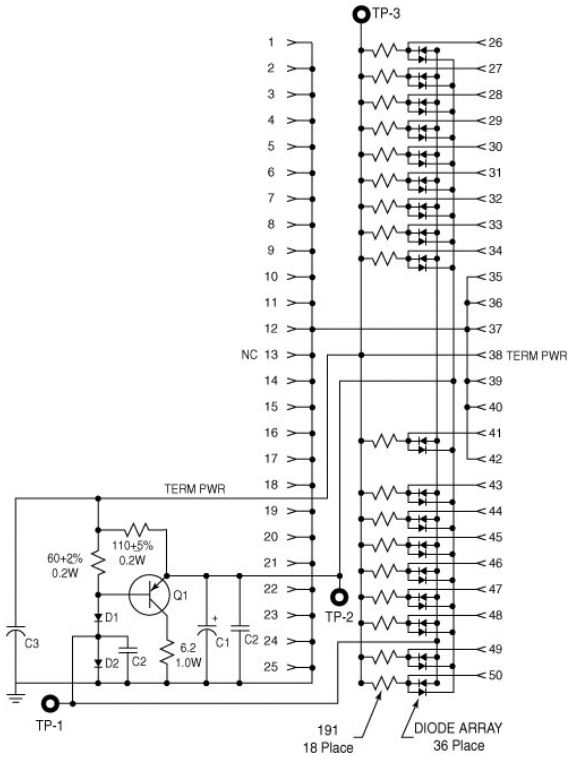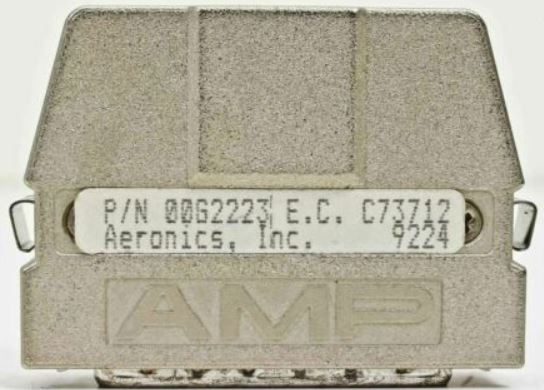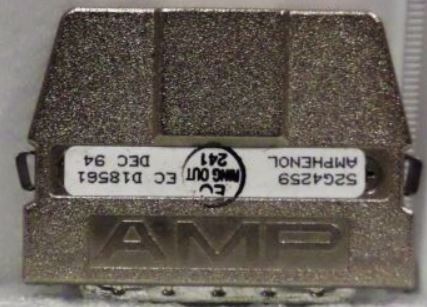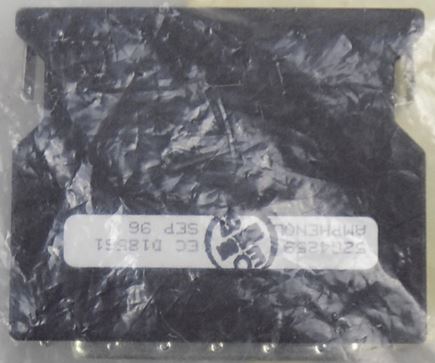|
Features
SCSI I/O Controller 4-4
Term Power Overload Protection (4-1 page)
Features
- Accepts multiple commands per device at a time from system
- SCSI-2 data rate of up to 10MB per second (synchronous protocol)
- SCSI initiator
- SCSI target
- SCSI parity
- Bus Master
- Streaming Data Support (Ed. I think it MUST support Bus Fairness as well)
- Address and Data Parity Support
- Supports Command Tagged Queuing (as SCSI initiator)
- Interrupt levels 3, 4, 5, 7, 10, 11, 12, 14
- HPDB50 external SCSI Port
SCSI I/O Controller 4-4 Adapter ID 8D77, FRU P/N 52G5483
(P/N 52G5484, 52G5483, 52G7504, 52G7509, 11H4779, 11H4780, 52G1171; FC 2410, 2830)

D1 Diode
DL1,2 bel 0401-1403-11 delay module
F1 PTC
J1 High Availability
U4 32G0215(ESD)
U5,6 CXK581001M-70L 128Kx8 SRAM
|
U8 N80C186XL20
U9 WD33C93BJM 00-02 or 00-04
U22 uCode??
U26 PLCC44 ???
U47 ??
Y2 39.9500 MHz osc (WD33C93B)
|
Only 74xx glue on the solder side.
U4 32G0215(ESD) is used on all versions.
There seems to be a connection between the later production dates and the
"00-04" revision of the WD33C93B.
32G0215 Laser Etched - 93-ish mfr, "00-02" WD33C93B
32G0215 Ink Printed - 95-ish mfr, "00-04" WD33C93B
DL1,2
bel 0401-1403-11 Passive delay
module. Total Delay 5.0 ns
bel App 1-R1 Pulse Shaping / Clock
Pulse Generation Circuits
Y2 39.9500 MHz osc, provides input clock
for the WD33C93B
"When the 33C93B has an input clock between
16 and 20 MHz, ... the host can select... Fast
synchronous transfers with a peak rate of 10 MB/s on
both the SCSI and host DMA interfaces."
I also suspect that 39.9500 MHz osc is used to provide
the clock (suitably divided) for other components.
Three possible firmware chips, the socketed PLCC44
(U26), the socketed DIP-20 (U22), and the surface
mounted PLCC (U47) above the 80C186XL20.
I see two digital signal regenerators (DL1,2) between
the DIP-20 and the 32G0215.
J1 (also called P3) High Availability Jumper
Must be out of the circuit for high availability
("Y") configuration. Put the jumpers over one row only
so you don't loose them. There are 13 pairs of pins. You
will need a 6 and 7 pair berg jumper (ganged jumper) in
order to use this for normal SCSI configuration.
P3 High Avail Jumper 2 pieces 42F7525, 42F7526
So, can we make a kludge of an internal terminator
using the J1 headers? DIP or SIP resistor network?
FPT Terminators (from HERE)
Terminators: The FPT-3 is generally used on the the internal end of the
cable, and the FPT-18 is used on the external end of the cable.
non-FPT: passive. Internal/External SCSI bus limited to two external devices.
FPT-3: actively terminates only three SCSI bus lines: ACK, REQ, SEL.
FPT-18: active. 18 lines of SCSI bus, [eight data lines]. No longer manufactured.
FPT-18+: active. 18 lines Functionally equivalent and fully interchangeable with FPT-18.
More on FPT Terminators (from HERE)
FPT is an even better form of active termination, in which diode clamps are
added to eliminate signal overshoot and undershoot. The trick is that instead
of clamping to +5 and ground, these terminators clamp to the output of two
regulated voltages. This arrangement enables the clamping diodes to eliminate
signal overshoot and undershoot, especially at higher signaling speeds and over
longer distances. FPT is technically not found in the SCSI specifications but
is a superior type of termination for SE applications that experience high
levels of electrical noise.
FPT terminators are available in several versions. FPT-3 and FPT-18 versions
are available for 8-bit standard SCSI (Figure 7.18 shows the schematic for an
FTP-18 terminator), whereas the FPT-27 is available for 16-bit (Wide) SCSI. The
FPT-3 version forces the three most highly active SCSI signals on the 8-bit
SCSI bus to be perfect, whereas the FPT-18 forces all the SCSI signals on the
8-bit bus except grounds to be perfect. FPT-27 also forces all the 16-bit Wide
SCSI signals except grounds to be perfect.

FPT-18 SCSI terminator schematic (click to enlarge)
Card edge, FPT-3 00G0972 "50-position
card edge terminator"
70F9900 Old card edge non-FPT Terminator. Sub to 00G0972
External Terminator for HPDB50 Port
50-Position External Terminator FPT-18C 52G4259
50-pin, high-density, external, FPT-18+ 51G7737
Note: 52G4259 replaces FPT-3 00G2223, 51G7737, and
FPT-18 43G0378. All are usable.
Aeronics 00G2223 FPT-3

52G4259 FPT-18C

52G4259 Black FPT-18C (different case)

Same P/N (52G4259) and EC (D18561). My SWAG is that IBM moved from the AMP
metal shell to the black one due to cost. I can't verify the electronics being
the same, but they probably are...
External Terminator for C50 Connector on External SCSI Cable
50-pin, low-density, external, FPT-18+ 51 51G7736
50-pin, low-density, external, FPT18C 52G4260
Note: 52G4260 replaces FPT-3 00G0968, FPT-18 43G0467, and FPT-18 51G7736.
All are usable.
51G7736 FPT-18+

222-12-50-035 CINCH
FPT-18 43G0378?
|